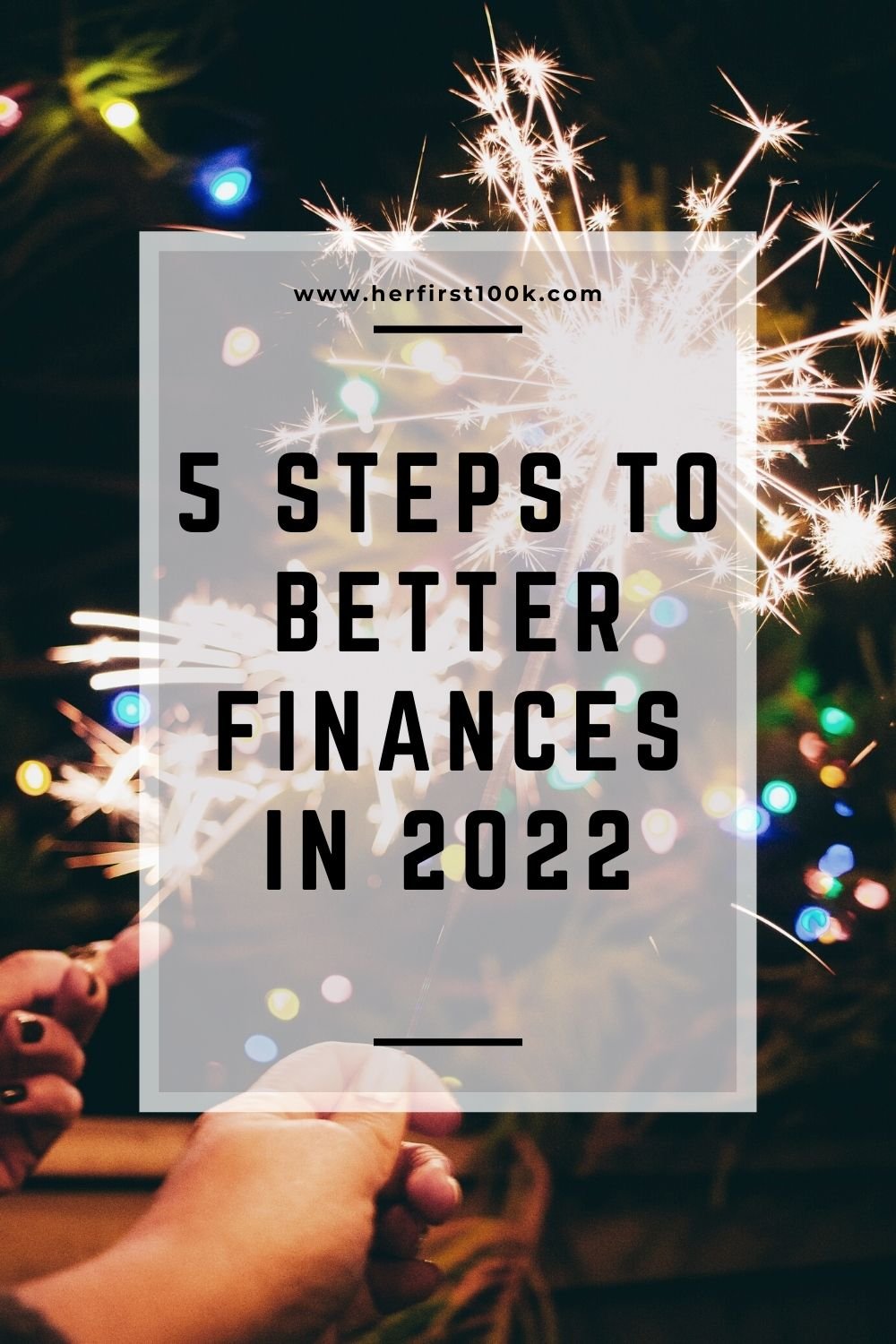The following article may contain affiliate links or sponsored content. This doesn’t cost you anything, and shopping or using our affiliate partners is a way to support our mission. I will never work with a brand or showcase a product that I don’t personally use or believe in.
5 Steps to Better Finances
Whether you’re reading this ahead of the new year or on a hot day in July, this list will help you rock and revamp your personal finances in the year ahead.
Move your emergency funds and short-term savings into a High Yield Savings Account
You’ve heard me talk over and over about how your money is simply wasting away in your regular savings account –– losing value on the daily to inflation. Your typical savings account at your brick-and-mortar bank earns you pennies a year. Seriously, go check right now and see how much interest you’re earning on your non-HYSA savings account…
Are you back? Pretty bad, right? Yikes.
HYSA’s help you earn over 10x the amount of interest, helping your money keep up with inflation and working for you. It’s a no-brainer.
Have a money date
One of my favorite monthly activities is my money date. It’s one of my most important self-care rituals of the month, where I sit down with my statements from the past month, a glass of wine, and go through my transactions with a fine-toothed comb.
I go in-depth on this practice on the financial self-care episode of the Financial Feminist podcast, but here’s generally what I’m looking for:
-
Fraudulent or duplicate charges. You’d be shocked at how often these happen without me noticing during the month. The ability to dispute these charges is another great benefit of using a credit card over a debit card.
-
Subscriptions I no longer use. It’s almost too easy to sign up for an “inexpensive” subscription and then realize you haven’t used the service in several months. You could be wasting hundreds a year on unused subscriptions.
-
Areas I may have over-spent. I shock people every time I mention that I do not use a traditional budgeting system. I do, however, retroactively “budget” by looking through my statements. I take stock of where I overspent in the month and even where I didn’t spend as much as I thought. This is a chance to re-align my goals and make sure I’m following my own values-based spending plan.
-
Make a plan. Now that you have all the data, make a plan for your finances for the next month!
I have a monthly money date, but this time of year is an excellent one to do a more thorough audit of your finances. Look at the year as a whole, and see where your financial priorities may have shifted. Do you need to re-organize your budget? Start contributing more to your investments? Ask for a raise for cost of living? Up your emergency fund amount? Set aside some additional time to really look over these numbers and make a plan for the next year.
Build a Sinking Funds savings plan
Sinking Funds are the easiest “secret” of the finance industry. These little virtual piggy banks are the best way to save for big purchases over a period of time. I have a whole blog post about how to build sinking funds ––, but right now, all you need to do is look at the year ahead and ask yourself, “what do I need to save for in the next year, and how much will I need?”
Once you have what you’re saving for and the total amount of savings you’ll need listed out, you can start building your sinking funds. For example, if you are planning a baby shower in March and have a budget of $300, you’ll need to set aside $100 a month to help you reach your goal.
Keep these savings in an HYSA, so it’s easily accessible and has time to earn some interest to help you out. You can either open multiple savings accounts to keep track of your goals OR build out a spreadsheet to help you track what money belongs where within a certain account.
Plan for tax season
I know, I know, I know. Taxes are the last thing you want to think about when you’re sipping eggnog, but preparing now can save you a LOT of headaches later.
Depending on your financial situation, prepping for tax season might look different from others. If you’re a small business owner or have a side hustle, make sure you have records of your income and expenses to make sure you’re taking advantage of write-offs.
If you believe you’ll owe money this coming year, start setting it aside NOW. Use a sinking fund to save a pre-determined amount from your next few paychecks to make sure you don’t have to dig into your emergency fund to pay.
Start Investing
If you’ve been waiting on the sidelines to start investing, letting fear hold you back, I have some good news for you –– the best time to start investing? Today.
Investing is the best way to build wealth, and women, in particular, cite fear as being the number one reason they haven’t started. The truth is, we can’t afford that fear. That fear is what makes women miss out on a million dollars on average over their lifetime.
$1,000,000. With six zeroes.
Fortunately, we’ve been hard at work building a community of investors. A community where we come together to learn and discuss investing and kick fear to the curb. This one-of-a-kind platform officially launches in January.
Check out our one-of-a-kind investing platform, Stock Market School.
As a side note, you have until tax time to make your maximum contributions for the year –– so even if you open a Roth today, you’ll still have plenty of time to pay in for this year!
Not sure which account to start with? Check out my IRA blog, where I break down different investing accounts and who they might be best for!



